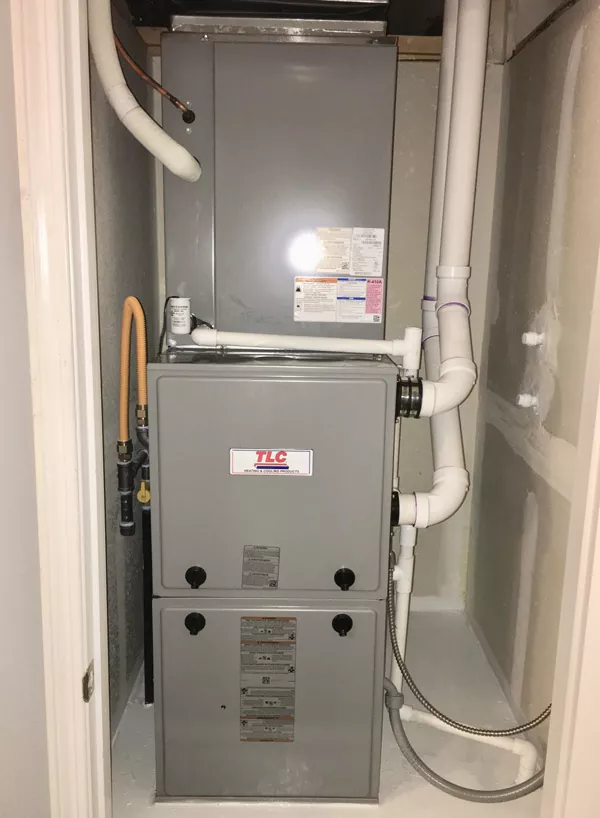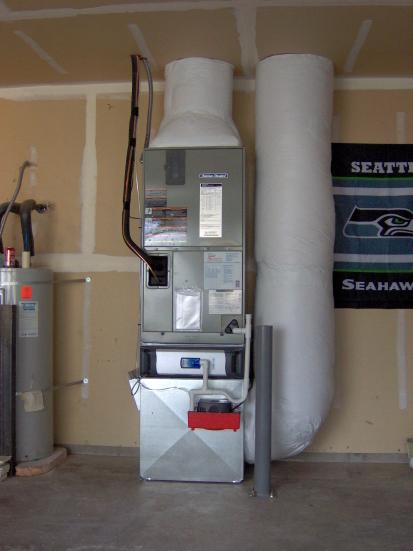Why choose our HVAC company for furnace installations and repairs in Portland?
Why choose our HVAC company for furnace installations and repairs in Portland?
Blog Article
The Ultimate Guide to Furnace Setup for a Cozy Home
Furnace installation is a vital element of keeping a comfortable home atmosphere, especially during the colder months. Understanding the various sorts of heating systems offered and the value of picking the suitable size can considerably influence both effectiveness and convenience degrees. Furthermore, a complete installation procedure, enhanced by the right tools and products, ensures optimal efficiency. This overview aims to outfit house owners with the knowledge required to make enlightened decisions and implement reliable maintenance techniques. As you take into consideration these aspects, the concern remains: what steps can you require to ensure your heating system offers you well for many years to find?
Kinds of Furnaces
When taking into consideration heating system setup, recognizing the various kinds of heating systems readily available is important for making an informed decision. The key types of heaters include gas, electric, and oil heaters, each offering distinct advantages and factors to consider.
Gas furnaces are one of the most common choice as a result of their performance and lower functional expenses. They utilize gas or propane, offering quick heating and constant efficiency, making them excellent for chillier environments.
Electric heating systems, while generally easier to set up and preserve, often tend to have greater functional prices. They are usually preferred in locations where gas solution is unavailable or for homes with existing electric facilities.
Oil heating systems, though less typical today, stay a practical option in specific areas. They burn heating oil, which can be advantageous throughout chillier months, yet their reliance on oil shipment positions prospective challenges.
In addition, there are high-efficiency models offered across these kinds, which can considerably decrease energy consumption and energy bills. Ultimately, comprehending these heater kinds will assist home owners select a system that lines up with their heating needs, spending plan, and energy choices.
Picking the Right Size
Choosing the ideal dimension for a heating system is essential to making certain optimal efficiency and power efficiency. A small furnace will certainly battle to keep comfy temperature levels during the cold months, resulting in boosted wear and tear, higher energy bills, and potential system failure. Conversely, a large furnace may cycle on and off as well frequently, causing ineffective heating and irregular temperature circulation within the home.

Heater sizes are generally gauged in British Thermal Devices (BTUs), which suggest the amount of energy required to warm a space. It is suggested to speak with a certified cooling and heating expert that can carry out the essential calculations and suggest a suitably sized unit. furnace repair. Buying the appropriate furnace dimension not only improves convenience but likewise adds to lasting energy cost savings and system dependability
Installation Process Introduction
As soon as the appropriate furnace size has actually been established, the following step involves comprehending the installment process. This process usually begins with a thorough assessment of the installation site, including the existing ductwork and ventilation systems. Appropriate planning is important to make certain seamless combination and optimal performance of the brand-new heater.
The setup usually consists of disconnecting the old system, which includes safely getting rid of any kind of electric links, gas lines, and ductwork affixed to the previous heater - furnace repair. As soon as gotten rid of, the new heating system is very carefully located and leveled, making sure that it satisfies the producer's specs for optimal operation
Following, the installer will certainly attach the essential gas and electric lines, adhering to local codes and safety regulations. Following this, ductwork might require to be changed or replaced to fit the new system, ensuring efficient air movement throughout the home.

Crucial Tools and Materials
Collecting the crucial tools and products is essential for an effective heater setup. Correct preparation makes sure that the installment process is effective and minimizes the capacity for mistakes.
Key tools needed consist of a drill, screwdrivers, wrenches, pliers, and a level. A multimeter is necessary for electric connections, while a pipe cutter and flexible wrench are essential for gas line installation. Furthermore, a tape action and a stud finder will assist in making sure exact placement and protected fastening of the heating system.
In regards to products, you will need ductwork, insulation, and sealing tape to make sure optimum air movement and energy efficiency. It is likewise crucial to have a new furnace filter accessible, together with airing vent products, such as PVC pipe or metal flue, helpful resources relying on the kind of heater being set up.
Security tools, consisting of handwear covers, safety glasses, and a face mask, is additionally essential to protect against dust and debris during installation. Having all these tools and products conveniently offered not just simplifies the procedure yet also boosts the safety and security and performance of the heater installment.
Upkeep Tips for Long Life
To make sure the durability of your heating system, it is necessary to apply a routine upkeep schedule that resolves crucial parts of the system. Beginning by changing or cleansing the air filter every one to three months, as a blocked filter can limit air movement and reduce efficiency. Additionally, evaluate and cleanse the blower useful source assembly to avoid websites dirt buildup that can impede performance.
Following, inspect the thermostat settings and rectify if needed to guarantee accurate temperature level guideline. Examine the ductwork for leakages or obstructions, as this can result in power loss and unequal heating. Consistently lube the motor and bearings according to the supplier's recommendations to minimize deterioration.
Professional examinations must occur every year, where a qualified service technician can evaluate the heater's overall problem, check for gas leaks, and ensure that security attributes are working appropriately. Think about mounting a programmable thermostat to enhance energy usage and keep consistent home temperatures. By taking on these maintenance methods, you can boost your heater's performance, extend its life-span, and inevitably enjoy a relaxing and comfortable home environment.
Conclusion
Reliable heating system setup is essential for achieving ideal home convenience and power efficiency. Understanding numerous heater types and choosing the suitable size makes sure correct functionality.
Report this page